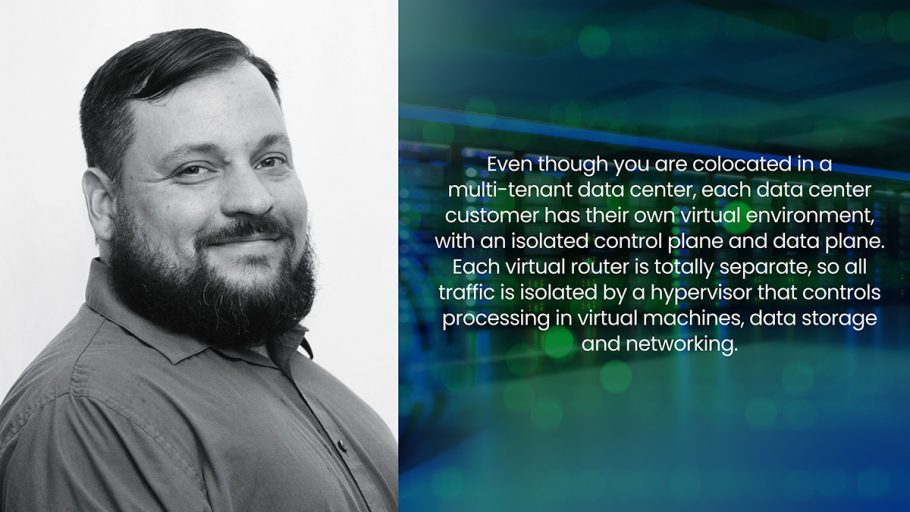In the first article of this series, I discussed accelerating “time to cloud” because clouds are where you intersect with customers and business partners and the faster you can get to cloud resources and platforms, the sooner you will find the value you seek.
Routers make interconnection happen. And in my opinion they don’t get as much respect or attention as they deserve–until you need them to keep workstreams and revenue flowing. Then, they’re your new IT superhero.
The rapid growth of artificial intelligence and other modern technologies means that data centers need to scale up their infrastructure, while driving innovation in both new designs and technologies.
The Origin Story
A router is a device that controls which data is sent into a local area network (LAN), wide area network (WAN), public and private clouds, and the Internet. As one of the appliances that has been implemented since the dawn of networking, legacy routers are hardware.
Virtualizing whenever possible is a good thing, so it will come as no surprise that virtual routers, invented in the early 2000s, have become the software tool of choice for network orchestration and data transmission. That begs the question: Why am I talking about a 20+ year old technology? As mentioned previously, one reason relates to workstreams and revenue. Another reason, however, is that enterprise network engineers are continually pressed to improve agility whilst lowering costs, and routers are integral to meeting these formidable challenges.

Virtual Routers and Data Centers: A Dynamic Duo
Just about every superhero has a sidekick. For virtual routers, that’s data centers. Before I dive into how they work together, I’ll point to a practical advantage of virtual routers: They don’t depend on a supply chain. You don’t need to order and wait for the router to come from the supplier and then take time to install and configure the appliance, either in your on-prem data center or during a trip to a third-party facility.
Of course, there’s zero capital investment and no maintenance. The only measurable investment is the time required for someone to spin up a virtual router and do fundamental routing work – connecting hosts back to servers for cloud interconnection. Virtual routers also can supplant hardware-based routers for LAN and WAN management across an enterprise, the types of networking that IT teams have been executing for decades.
Thanks to software platforms such as the Open Cloud Exchange® (OCX), it’s simple to order and connect Layer 3 ethernet virtual circuits (EVCs). As a matter of fact, a company does not even need to be deployed in a CoreSite data center to use the OCX to manage virtual routers and data transfer.
The OCX also enables direct, “native” cloud connectivity over Layer 2. In my first Interconnection Insights article, I discussed some differences between Layer 2 and Layer 3. What’s important here is that Layer 2 connectivity happens in a data center over a cross connect, a physical link between your server and a cloud provider that bypasses the Internet. You need to be deployed in the data center to use a cross connect, and in a CoreSite data center to use the OCX for native cloud connection and data exchange between public clouds.
Security is always an important topic when we talk with customers about virtual routers. Even though you are colocated in a multi-tenant data center, each data center customer has their own virtual environment, with an isolated control plane and data plane. Each virtual router is totally separate, so all traffic is isolated by a hypervisor that controls processing in virtual machines, data storage and networking.
Together, virtual routers and data centers create the connections, rapid services distribution, reliability, and reduced cost of operation that network engineers are fighting for.

Virtualized Technologies, Real Business Advantages
I keep a simple question in mind when I’m working with my team or customers to explain the technologies we use in data center operations: So, what? Eventually, we are going to get to the question, “What does [insert technology of choice here] do to help us be more productive and profitable?”
Again, there is no capital expense associated with virtual routers and, for the record, the OCX is very affordable and available as a month-to-month commitment. Minimizing hardware simplifies the footprint of your deployment, which controls costs for power and space and makes it easier to manage. CoreSite does all the cloud provisioning, enabling your most skilled IT personnel to direct their energy to projects that create competitive advantage.
Extending that line of thought, not only are you able to speed time to cloud, but you can also take advantage of data centers for inter-site and inter-market connectivity. That expands market reach and support for a remote workforce and reduces the risk of downtime, because now you have geographic diversity in your infrastructure.
It seems that virtually (sorry, had to say it) all discussion leads to cloud these days. For good reason. Inasmuch as “digital transformation” is rapidly becoming a worn and somewhat derided concept, many organizations are just starting to take it on and those who are well into their initiative are realizing that it’s not an end state but instead a continuous process. I wonder if we will still be talking about it in 20 years, singing its praises, like our old friend, the router.



